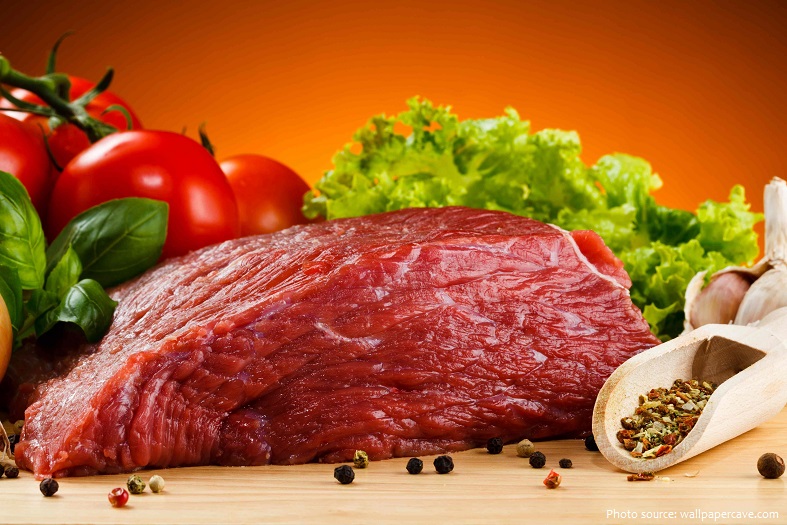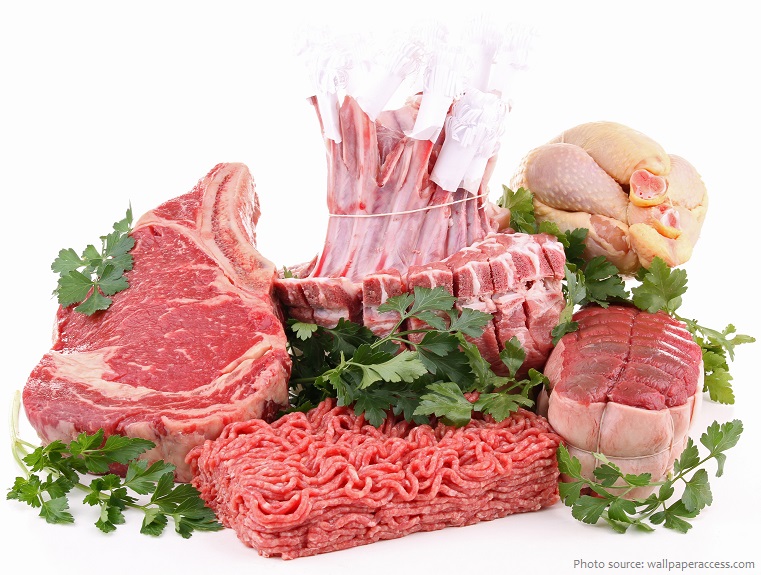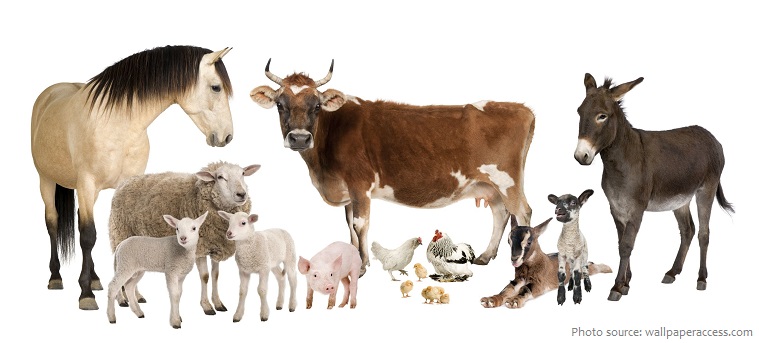
Meat is animal flesh that is eaten as food.
The word “meat” comes from the Old English word mete, which referred to food in general.
Meat is mainly composed of water, protein, and fat.
All muscle tissue is very high in protein, containing in most cases is a good source of zinc, vitamin B12, selenium, phosphorus, niacin, vitamin B6, choline, riboflavin and iron. Several forms of meat are also high in vitamin K.

The fat of meat, which varies widely with the species, quality, and cut, is a valuable source of energy and also influences the flavour, juiciness, and tenderness of the lean.
Parts such as livers, kidneys, hearts, and other portions are excellent sources of vitamins and of essential minerals, easily assimilated by the human system. meat for human consumption.
Meat digests somewhat slowly, but 95 percent of meat protein and 96 percent of the fat are digested.
It is edible raw, but is normally eaten after it has been cooked and seasoned or processed in a variety of ways.
Generally, the meat of adult mammals such as cows, sheep, and horses is considered red, while chicken and turkey breast meat is considered white.

Pork is the most commonly consumed meat worldwide. It is the most popular meat in the Western world and in Central Europe, and it is also very popular in the Eastern and non-Muslim parts of India, Southeastern Asia (Indochina, Philippines, Singapore, East Timor) and in Malaysia. It is highly prized in Asian cuisines, especially in China, for its fat content and texture.
Beef is the culinary name for meat from cattle, particularly skeletal muscle. Beef tenderness and flavour are improved by aging – in one common aging method the carcass is hung for about two weeks at approximately 2 °C (36 °F), encouraging physical changes in the muscle tissue that enhance the quality of the meat.
Meat is prepared in many ways, as steaks, in stews, fondue, or as dried meat like beef jerky. It may be ground then formed into patties (as hamburgers or croquettes), loaves, or sausages, or used in loose form (as in “sloppy joe” or Bolognese sauce).

Some meat is cured by smoking, which is the process of flavoring, cooking, or preserving food by exposing it to the smoke from burning or smoldering plant materials, most often wood.
Sausage-processing methods include cooking, curing (by application of salt solution), and smoking (exposure to smoke, often following curing). The last two methods, originally employed for preservation, are now used mainly for their contribution to flavour.
Hot dog or frankfurter, frank, or wien is a cooked sausage, traditionally grilled or steamed andserved in a partially sliced bun. Historians believe that its origins can be traced all the way back to era of the notorious Roman emperor Nero, whose cook, Gaius, may have linked the first sausages.

The term hamburger originally derives from Hamburg, Germany‘s second-largest city. In German, Burg means “castle”, “fortified settlement” or “fortified refuge” and is a widespread component of place names.
Ham is pork meat that comes from a thigh of a pig. It is produced by curing raw pork by salting, also known as dry curing, or brining, also known as wet curing. It is one of the most consumed pork products in the world. Ham was one of the most ancient meats of civilized peoples and was common throughout Europe and Asia except where forbidden by religious edict.
Meat is generally eaten cooked, but many recipes call for raw beef, veal or fish (tartare).
Steak tartare is a French dish made from finely chopped or ground (minced) raw meat (often beef). More accurately, it is scraped so as not to let even the slightest of the sinew fat get into the scraped meat. It is often served with onions, capers, seasonings such as fresh ground pepper and Worcestershire sauce, and sometimes raw egg yolk.

Meat is important in economy and culture, even though its mass production and consumption has been determined to pose risks for human health and the environment.
Humans have hunted and killed animals for meat since prehistoric times.
Paleontological evidence suggests that meat constituted a substantial proportion of the diet of the earliest humans. Early hunter-gatherers depended on the organized hunting of large animals such as bison and deer.
The domestication of animals, of which we have evidence dating back to the end of the last glacial period (c. 10,000 BC), allowed the systematic production of meat and the breeding of animals with a view to improving meat production.

Sheep, originating from western Asia, were domesticated with the help of dogs prior to the establishment of settled agriculture, likely as early as the 8th millennium BC.
Cattle were domesticated in Mesopotamia after settled agriculture was established about 5000 BC.
Domestic pigs, which are descended from wild boars, are known to have existed about 2500 BC in modern-day Hungary and in Troy.
Deer are hunted for their meat (venison) in various regions.
Horses are commonly eaten in France, Italy, Germany and Japan, among other countries
Vegetarians and vegans may not eat meat because of concerns about the ethics of eating meat, environmental effects of meat production or health effects of consumption.